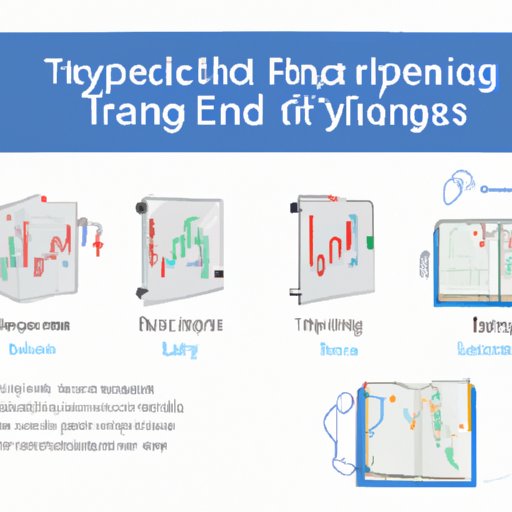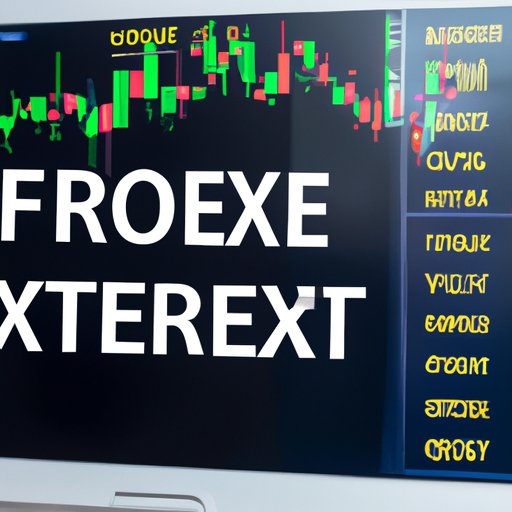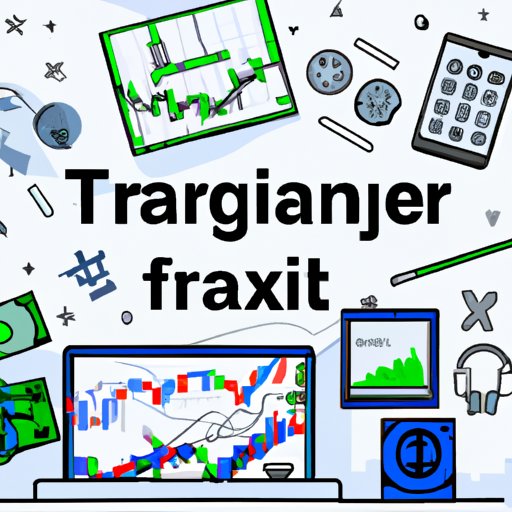
Introduction to Forex Trading: Explaining the Basics of Currency Exchange
Forex trading is a global decentralized market for the trading of currencies. It is the world’s largest financial market, with an estimated daily turnover of more than $5 trillion. In order to understand where you can trade forex, it’s important to first understand the basics of currency exchange.
At its most basic level, forex refers to the buying and selling of different currencies in order to make a profit. It’s a way of taking advantage of the changing values of various currencies around the world. As one currency increases in value relative to another, traders can take advantage of this change by buying low and selling high.
A few key terms are important to understand when getting started with forex trading. Major currencies refer to the eight most traded currencies in the world, which include the US dollar (USD), euro (EUR), Japanese yen (JPY), British pound (GBP), Swiss franc (CHF), Canadian dollar (CAD), Australian dollar (AUD), and New Zealand dollar (NZD).
When trading forex, traders use different types of orders to buy or sell a currency pair. These orders are commonly referred to as market orders, limit orders, stop-loss orders, and take-profit orders. Leverage and margin are also important concepts to understand. Leverage is a loan offered by the broker that allows traders to open a position with more capital than they actually have in their accounts. Margin is the amount of money required to open a leveraged position.

Exploring Popular Forex Trading Platforms and Brokers
Before you start trading forex, you need to find a platform and broker that works best for you. There are two main types of brokers: market makers and ECN brokers. Market makers provide liquidity to the market and make a profit from the spread between the bid and ask prices. ECN brokers, on the other hand, provide direct access to the interbank market, allowing traders to see real-time pricing and place trades without any intermediary.
When choosing a broker, it’s important to consider factors such as fees, customer service, regulation, and trading tools. Most brokers offer demo accounts so you can test out the platform before investing any real money. Popular forex trading platforms include MetaTrader4 (MT4), MetaTrader5 (MT5), and cTrader.
Analyzing the Benefits and Risks of Forex Trading
Forex trading offers numerous advantages, including high liquidity, low transaction costs, and 24-hour trading. It’s also relatively easy to get started, since all you need is a computer and an internet connection. Additionally, there is no central marketplace, so traders can take advantage of price discrepancies across multiple platforms.
However, there are also some risks associated with forex trading. The most significant risk is the potential for large losses due to leverage. Additionally, it’s important to remember that forex markets are highly volatile and unpredictable, so it’s important to have a strategy in place to mitigate risks.

Tips for Beginner Forex Traders
If you’re just starting out with forex trading, there are a few tips that can help you get started on the right foot. First, it’s important to develop a trading plan that outlines your goals and strategies. This plan should include entry and exit points, how much you’re willing to risk, and what type of trading style you prefer.
It’s also important to set risk management rules. This includes setting stop-loss and take-profit orders, as well as limiting the amount of money you’re willing to risk on any given trade. Finally, it’s a good idea to practice trading with a demo account before investing real money.
Key Strategies for Successful Forex Trading
Once you’ve gotten the hang of trading with a demo account, it’s time to start thinking about strategies for successful forex trading. One of the most popular strategies is technical analysis, which involves analyzing historical price data in order to identify possible trends and patterns. Fundamental analysis is another popular strategy, which involves analyzing economic indicators and news stories in order to predict future price movements.
Money and risk management are also essential for successful forex trading. Money management involves setting limits on how much you’re willing to invest in each trade, while risk management involves setting stop-loss and take-profit orders. Finally, it’s important to understand the psychological aspects of trading, such as staying disciplined and avoiding emotional decisions.
Conclusion
Forex trading offers numerous advantages, including high liquidity, low transaction costs, and 24-hour trading. However, it’s important to understand the risks associated with leverage and volatility. Before beginning to trade forex, it’s important to choose the right broker and platform, develop a trading plan, and set risk management rules. Additionally, successful trading requires understanding key strategies such as technical analysis, fundamental analysis, money management, and risk management. With the right knowledge and preparation, forex trading can be a rewarding and profitable endeavor.
(Note: Is this article not meeting your expectations? Do you have knowledge or insights to share? Unlock new opportunities and expand your reach by joining our authors team. Click Registration to join us and share your expertise with our readers.)
